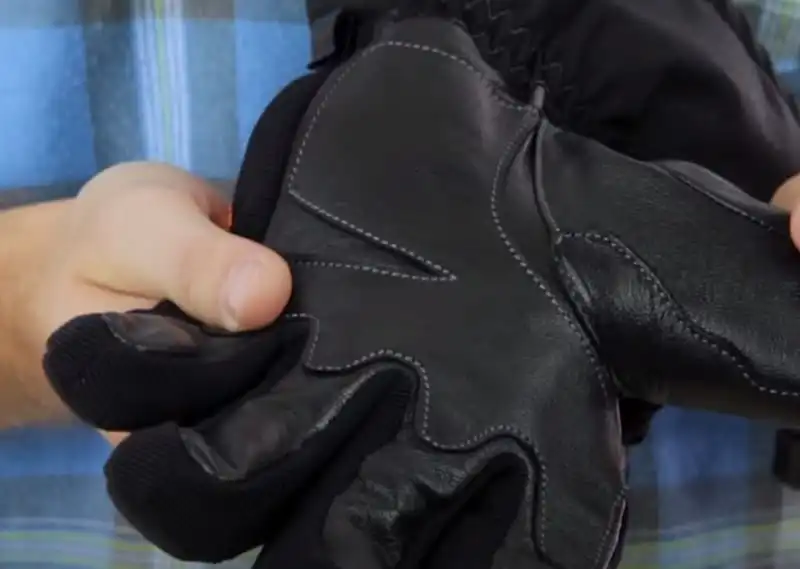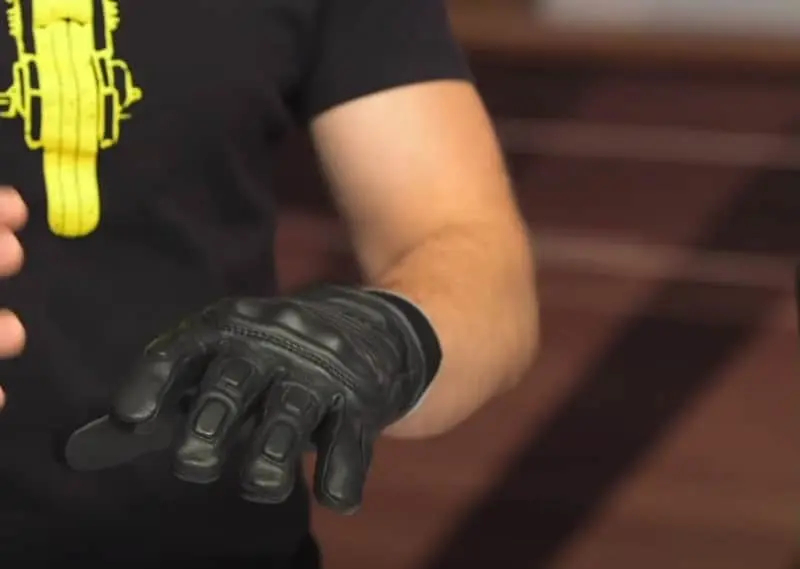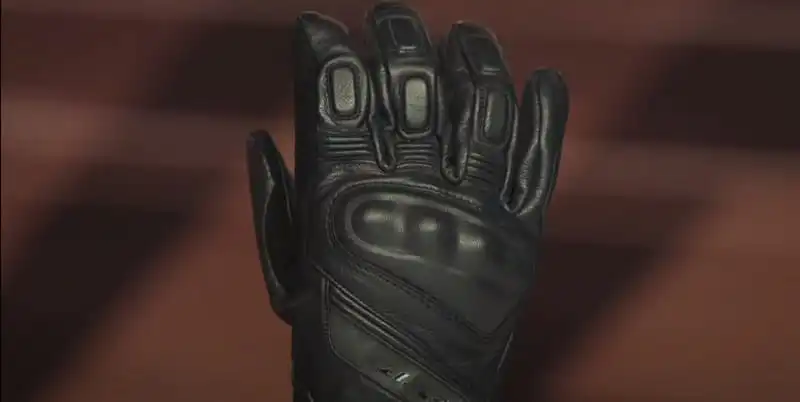Having durable winter motorcycle gloves is non-negotiable for comfort and protection across varying conditions. But with endless options on the market, figuring out which deliver gets tricky.
When FXR’s new Fuel winter motorcycle gloves caught my eye with their weatherproofing and insulation claims, I knew I had to rigorously test if they truly shield paws across frigid, wet miles.
But, the main question I will answer in this review is: Are these the best motorcycle gloves for cold weather for you? Join me in my quest to determine – whether they have what it takes.
FXR Fuel Gloves Review

A Closer Look at the Construction and Features
The FXR Fuel gloves (1) start with a tough polyester shell reinforced by full-grain leather across the palm and thumb.
This combination aims to provide abrasion resistance without compromising flexibility and feel. The company then bolsters the protective qualities using their proprietary Thinsulate insulation rated at 300g on the back of the hand and 200g in the palm.
For riders in frigid environments, having ample insulation makes a dramatic difference in preserving dexterity and comfort over the long haul.
But weatherproofing remains just as critical as insulation when the conditions deteriorate. Here, FXR implements an internal waterproof and breathable Hipora membrane to prevent moisture from saturating the liner while enabling interior vapor to escape.
Paired with a smooth fleece lining, the gloves strive to keep hands warm and dry across varying temperatures.
I especially appreciate the suede patch on the thumb—perfect for wiping nose drips and shielding fog without compromising abrasion protection.
The handy goggle wipe on the index finger serves a similar purpose for maintaining visibility. Lastly, the adjustable wrist cuff and Velcro closure around the housing ensure the elements stay out while allowing riders to customize the fit.
Putting Them to the Test Across Winter Riding Scenarios

I’ve spent the past few weeks and over 600 miles putting the FXR Fuel winter motorcycle gloves through their paces to evaluate their design claims.
From snow flurries at highway speeds to slick mountain switchbacks, they’ve faced the entire gamut of winter conditions. Here’s how they held up during real-world use cases:
Insulation and Weatherproofing
- During a 4-hour ride with freezing rain, the Thinsulate insulation and Hipora liner shielded my hands from the harsh cold and precipitation surprisingly well, given their medium-weight construction.
The insulating foam struck an ideal blend of bulk-free warmth while enabling plenty of feel at the bars.
- However, after riding through heavy, wet snow and slush for 2.5 hours, my hands eventually lost some warmth from the moisture saturation.
The gloves resist light precipitation but can’t match a completely waterproof winter glove in the nastiest of conditions.
- On a blustery 18-degree Fahrenheit morning at highway speeds, my hands stayed pleasantly warm with the wind chill reaching single digits. The snug fit sealed out icy drafts even at 75+ mph, thanks to the Hipora membrane.
- In warmer winter weather, around freezing, ventilation actually felt a bit excessive for my liking. The fleece liner absorbs some moisture unless the weather remains cold.
Dexterity and Feel
- The gloves deliver excellent flexibility and a tactile feel for this class of winter gloves. The diamond leather construction, neoprene, and thin insulation enable easy operation of switches and controls.
- Grabbing fuel pump handles and strapping down my tank bag posed no problems with the grippy reinforced palms.
- Thinner insulation in the fingers and palms maintains good awareness and feedback from the bars compared to bulkier gloves. The snug fit also bolsters sensitivity.
- In precipitation or heavy condensation, however, wet fleece in the fingers reduces contact precision somewhat until moisture can evaporate.
Protection and Durability

- Fortunately, I’ve yet to crash while testing the Fuel gloves, but from examining the construction, I’d expect solid abrasion resistance from the premium leather and impact protection from foam reinforcements.
- The reinforced exterior shows no signs of wear after hundreds of miles. No loose threads or tearing through material despite being tossed in packs and frequently donned/doffed.
- My only gripe is that the large goggle wipe panel seems prone to snagging on velcro and gear. I worry it may catch on something in a slide despite having external protection behind it.
Key Takeaways After Extensive Testing
- Superb dexterity – amongst the best feel of any insulated winter glove tested
- Impressive warmth for the bulk and weight
- Lacks hardcore waterproofing of solid winter gloves
- Compelling value at just over $100
Comparison to Other Winter Motorcycle Gloves
| Glove | Key Features |
|---|---|
| Revit Chevak GTX | GORE-TEX insert, Primaloft insulation, reinforcements on palm and fingers for abrasion resistance |
| Klim Adventure GTX | Waterproof and breathable Gore-Tex shell,Thermolite insulation, pre-curved design, touchscreen compatible fingertips |
| Revit Liberty H2O | Waterproof Hipora liner, PrimaLoft insulation, flexible leather and textile construction |
The FXR Fuel gloves have insulation comparable to the Revit Chevak GTX and superior dexterity over the bulkier Klim Adventure GTX but aren’t fully waterproof like the Revit Liberty H2O. The FXR Fuels provide a better feel and more precise grip than typical heavy winter gloves.

FAQs
Would the FXR Fuel gloves work well for adventure touring?
I’d say the FXR Fuels slot in as high-quality three-season adventure gloves with stretch for lighter winter usage, depending on where you ride. Their protection, weather resistance, and comfort make them versatile across pavement, gravel, and off-road riding in cool to cold weather.
How waterproof are they in heavy rain compared to winter gloves?
The Hipora liner provides water resistance that sheds light moisture well but struggles to match heavier-duty winter gloves once exposed to extended downpours. Fine for brief showers, but I’d recommend dedicated waterproof gloves in extremely wet conditions.
What temperature ranges do the gloves work well in?
For maximal comfort, I’ve found the FXR Fuel Gloves excel between 15-45°F (-9 – 7°C), assuming average winter precipitation. Warmer than 45, they run a bit hot unless airflow increases. Colder than 15, they still protect well with layers but begin losing some dexterity.
How long do the gloves take break-in for best comfort?
Thanks to the flexible materials and pre-curved design requiring minimal break-in, the gloves reach near maximal comfort within the first few rides. The liner packs out a bit to conform to your hands without excess bulk.
And Finally…Who Are the FXR Fuel Gloves For?
For riders seeking versatile cold-to-cool weather gloves with a better feel than heavy insulation permits, I believe the FXR Fuel gloves deliver excellent value.
They stand out with enhanced dexterity from top competitors, making them ideal for riders needing amplifier-like fine control regardless of the chill.
While lacking hardcore waterproofing of pure winter gloves, they resist light moisture for typical winter precipitation in average temperatures. Just bring an over glove or rain jacket if riding for hours through extremely wet conditions.
Given their well-rounded attributes of insulation, weather protection, flexibility, and impact defenses, I’d recommend the Fuel gloves to anyone riding in cooler temps needing reliability across paved, unpacked, and off-road terrain. They just might become my new favorite three-season moto companion.
Let me know in the comments if you have any other questions about the FXR Fuel gloves! I’m happy to provide more insider knowledge from my experience testing them.
Previous Article:
Next Article:

